20 Types of Screw Heads & Their Purposes
Author: Omar Alonso | Editor: Omar Alonso
Review & Research: Jen Worst & Chris Miller
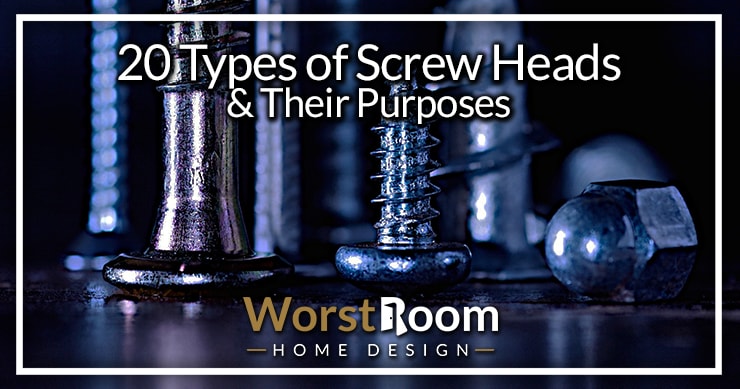
Collecting all the screwdriver bits for the different types of screw heads out there is extremely important; you don’t want to have to make a run to the hardware store each time you start a new project.
Given the abundance of screw types out there, you could go nuts trying to figure out each one and learning to distinguish it from the rest based on its uses and characteristics—it could take you weeks to figure it out.
In such cases, life gets easier when you realize that you can tell screws apart very simply based on one key physical characteristic—the screw head.
Learning to distinguish based on types of screw heads is not only easier and helps you identify the type of screw but also helps you figure out which driver is to be used with the screw—win-win all around.
This is important, as using the wrong driver could damage the screw and thereby, the material you’re driving it into. Stripping the head can become a nightmare of having to drill it out later or using pliers to turn it back out.
20 Types of Screw Heads
To prevent yourself from being driven crazy searching for information on each of the screw head types, here’s a primer to get you started.
Flat Screw Heads
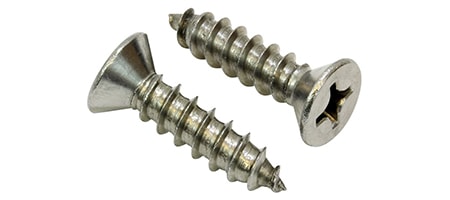
Flat screw heads are countersunk, which means that they sit completely flush with a surface or a little bit below it, ensuring that the screw head isn’t exposed.
This way, there’s nothing jutting out for things to get caught on and the finish is much neater and better looking, necessary in sofas and other frequently used or passed by furniture.
Flathead screws can have varying degrees or angles from the top of the head to the meeting point of the threads and the head.
82 degrees is standard and the most commonly available and used, but you can also find 90 degrees, 100 degrees, and other angles. The higher the degree, the more spread out and shorter the countersink hole needs to be.
Flathead screws are also commonly called slotted head screws, owing to the single opening for flat screwdrivers. Despite their popularity and inexpensive nature, screws with these heads are most given to stripping—it’s in their design so that you don’t over tighten them.
Raised Screw Heads
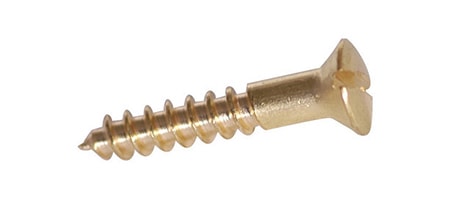
Also known as oval-shaped heads, raised screw heads have an angle similar to flat screws, except that their heads are more dome shaped as opposed to being completely flat.
This means that the head of such screws will slightly jut out from the surface. Depending on the angle and finish you want, you may countersink these screws, too.
Given their domed heads, these screws find more of a decorative purpose than a functional one, though they are pretty efficient when it comes to doing their job.
Bugle Screw Heads
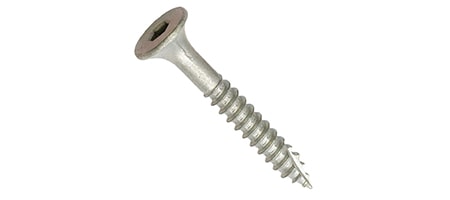
Bugle screw head shapes are majorly meant for most types of drywall, drywall alternatives, and plasterboard. These screws are also similar to flat screw heads.
However, instead of an angle below the head, there’s a curved shape, meant to reduce damage to the surface (this unique build lets them distribute stress over a wider surface, beyond the limits of flat screws).
The best thing about bugle screw head types is that they’re self-drilling, which negates the need for any pilot-hole drilling prior to using these.
Binding Screw Heads
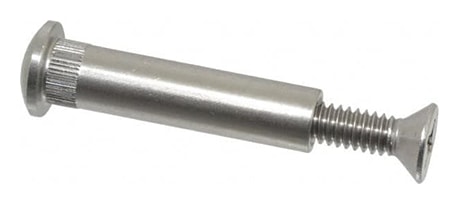
Binding screw heads are non-countersunk, which means that these heads don’t come with an angle and are clearly visible on the project’s surface, sitting above it. Therefore, you won’t need to create a countersink divot to house the screw head.
Binding screws can be used for a range of different projects and have a slightly domed head. These screws screw into each other, featuring male and female sides.
Binding types of screw heads are commonly used in bookbinding, but also find application in holding together leather, cloth, swatches, and so on.
Domed Screw Heads
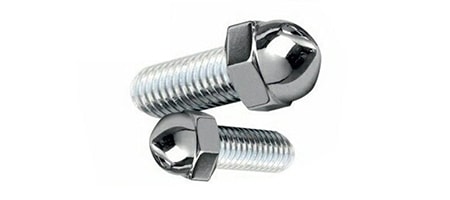
Domed screw heads are like ants—they’re everywhere. These dome screw heads are the most common screw heads on the market and can be used for any project that doesn’t require a flat head.
You could use these screws for decorative purposes, such as in ottomans or sofa types to create a tufted look or a pattern of metal studs.
The inner flat part of the dome keeps the screw correctly positioned on the surface, whereas the dome itself creates an aesthetically-appealing design on top of the surface you're working on.
Flange Screw Heads
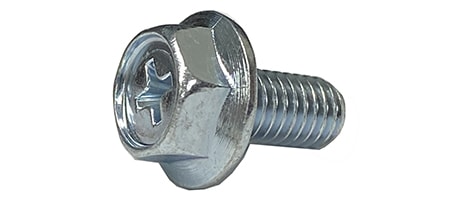
Also referred to as frame screw heads, the flange screw head types have a flange that juts out directly underneath the head.
This flange can be hexed or circular and helps the screw stay in position. This even acts like a washer would, in some projects. Just make sure you're using the right types of drill bits before hand so you aren't cracking your wood.
Truss Screw Heads
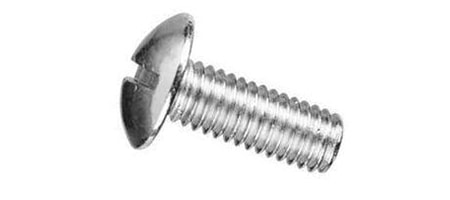
Truss screw heads have a slightly rounded surface and are generally wider than other screw heads. This is by design and works very well for the purpose intended.
These screw heads are commonly used when sheet metal is in the picture or projects that require large holes (since the truss head is so wide that it won’t go through the hole entirely).
Phillips Screw Heads
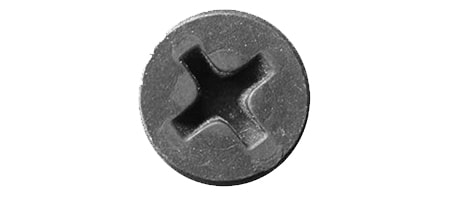
Another extremely common screw head shape, Phillips screws are popular for their cross shape that helps the screw self-center and prevents any odd-angle drilling. This means that you can also use any types of drills to install these, as they don’t budge from the force applied.
However, be cautious with too much force as it’s your ally, but only till it gets excessive enough to strip the head quickly. This will depend on the material used to make the screw, of course.
Pozidriv Screw Heads
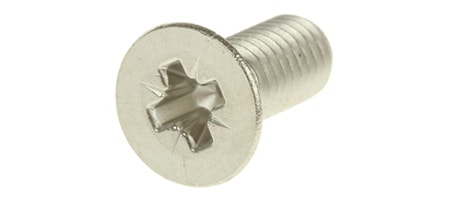
Similar to Phillips screw heads in terms of shape, Pozidriv screws achieve their star-shaped look thanks to the additional grooves they have.
Owing to their similarity with Phillips screws brings an advantage, though—you can use a Phillips screwdriver, in most cases, to remove screws with these heads.
Pozidrive screws are also more stable under force than their cousins from the Phillips family, but you may get put off by the fact that you need a specific screwdriver or driver bit to match the grooves on these screws.
If you’re having trouble differentiating between Phillips and Pozidrive screws, look at both from the side—the latter will have ribs between each of the four arms, marked with a “pz”.
Combination Screw Heads
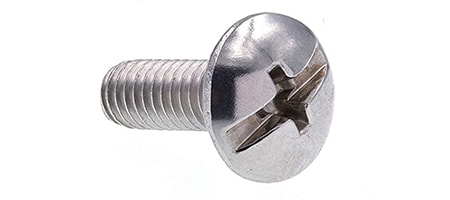
Some screw heads combine the best of all worlds; combination screw heads are just that. Due to this, these screw heads are among the most popular types of screw heads out there and you can even find various permutations and combinations of these.
Typically, combination screw head shapes are compatible with at least two, if not more, drivers. The only thing you’ll need to be especially aware of with these screws is whether they should be countersunk or not—the shape of the head will easily provide this information.
A screw head that needs countersinking will be angled under the head, while one that doesn’t need countersinking will be flat along the bottom of the head.
Hex Screw Heads
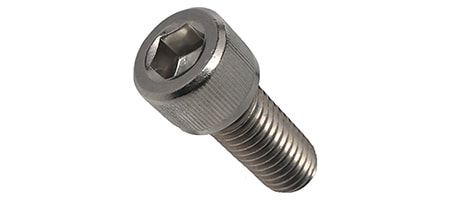
Hex screw heads are of two types—external and internal. External screw heads are hexagonal and protrude from the surface, looking similar to a bolt head. Some hex external screw heads have in-built flanges, while others make do with the hexagon for the head.
Installing or removing these heads requires a socket or a wrench; good leverage is possible with these screws since the full head is turned, instead of just the internal part of the head. You can get a lot of torque without worrying about stripping the head.
Hex internal screw heads are commonly used in furniture making and assembly. This is because they’re tough enough to withstand the Allen wrench during installation and removal, unlike slotted or Phillips screw heads. Therefore, the end result is quite pleasant.
Since they require an Allen wrench for installation and removal, most internal hex screw heads come with a fitting Allen wrench.
Quadrex Screw Heads
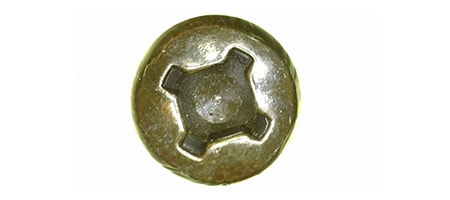
Also known as Phillips square drive heads, quadrex types of screw heads combine square recesses and Phillips.
Therefore, quadrex screw heads also look very similar to the Phillips squares, excepting the fact that cross shape, in the middle, is square instead of pointed, which keeps stripping under excessive force at bay.
Star Screw Heads
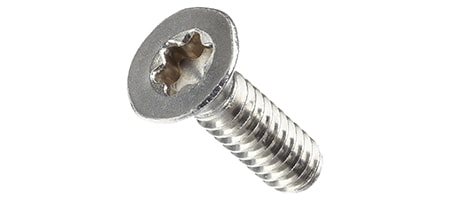
Star screw heads, as the name suggests, are designed with star-shaped heads. These screws span across a range of sizes and designs, all with their star screw head shapes.
For example, square recesses have double squares that form the central 8-point star. Therefore, you can use these to drive them using a Robertsons bit.
Robertsons also go up to three squares, which means a 12-point star can be created. These are most commonly used to prevent stripping the screw when there's a high level of force at play. Such screws are commonplace in car interiors.
Square Recess Screw Heads
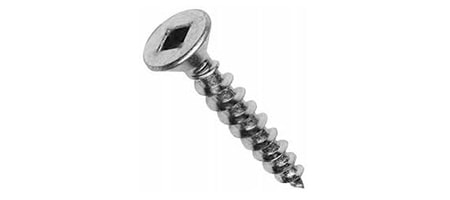
Also commonly referred to as Robertsons, these screw heads have a square central point that works to prevent cam outs.
The bit responsible for driving screws with these heads, itself also juts outs on a square taper. This creates a self-holding design, negating the need to hold the bit in place.
Tri-Wing Screw Head Shapes
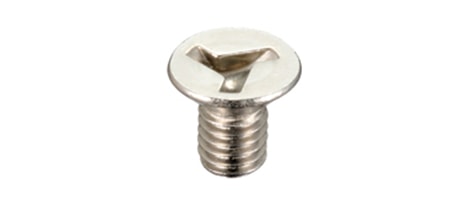
The Tri-Wing screw head shapes are registered trademarks of the Tri-Wing company as are the bit shapes needed to use them. Some call them Y-Type shapes, which better describes them, but the actual Tri-Wing ones are different.
These are one of several types of tamper-proof security screw head shapes that are uncommon enough that it'll be rare for someone to have easy access to the bit needed to mess with your stuff. The Y shape in these is actually a bit more rotational, for lack of a better word.
Slotted Screw Heads
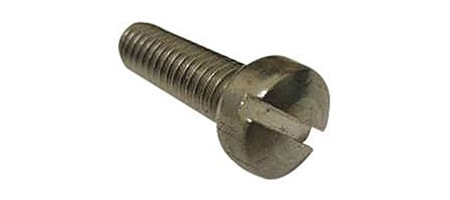
Yes, we waited this for in the list to share with you the classic slotted screw head type. They simply have a straight line in them for a wide flat head screwdriver bit.
They're less likely to strip due to the increase surface area and torque you can apply, but more likely because it's easier for the bit to not be sitting flush at the bottom of the slot.
Some of these will feature a smaller Phillips shape in the center so you use either of these two common bits. These mixtures are called combination heads.
Torx & Torx Plus Screw Head Types
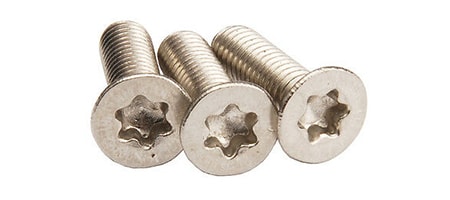
The Torx screw heads can easily be mistaken for the internal hexagonal shape but they're more like six-pointed stars with curved regions between the points. This really maximizes the surface area the bit will press against, causing Torx screw heads to be among the strongest.
This lets you exert more torque (and thus the brand name 'Torx') with a lower risk of damage to the head. These are great, as long as you have a bit around. Otherwise, you'll be ordering one or running off to the store.
Sentinel Screw Heads
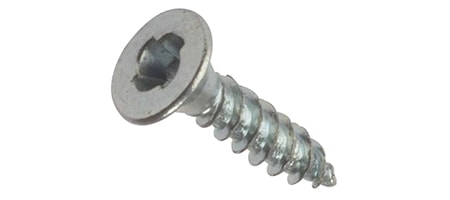
Another of the security conscious screw heads, the Sentinel shape resembles a ninja star or a spinning saw blade. The design gives the driver bit four flat places to push against when tightening that are all around the circumference of the exact center.
This bit of distance away from the center lets you exert more force with less effort, either when manually screwing or using a power driver. To put it plainly, you get more torque with these. It'll also be very rare for anyone to have a bit on hand that wants to tamper with your equipment.
Pin Screw Heads
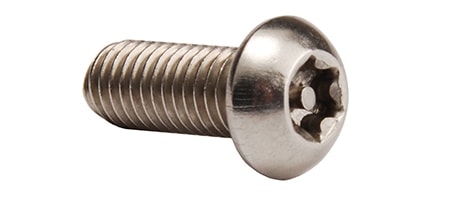
Pin screw heads are the ultimate in security because the defining feature can work with any of the screw head shapes. The difference is there's a pin in the center that stops the bit from being seated into the screw head.
So no matter what, you need a special bit of whatever type that can accommodate the pin before you can even think about using the screw. This is a very clever solution to security and tampering problems.
Two Hole Screw Heads (& Other Shapes)
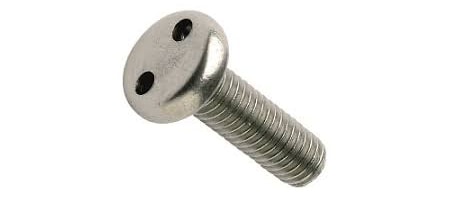
Two hole screw heads, triangle shaped ones, and pan head (H types) among others, are much more rare even than any of the security-based options above. Just take a look at the image and you'll understand how rare it would be for anyone to have these custom bits on hand.
These are sometimes called snake eye screws or pig nose screws. They're "tamper proof screws" simply because they're so rare that someone looking specifically to cause problems is still unlikely to be carrying a screwdriver or bit that can handle these.
Types of Screw Heads for Every Project
Though this is, by no means, an exhaustive list, hopefully this primer was good enough for you to nail the screw on the head, quite literally. Different screw heads have different strengths and weaknesses that you should now understand.
Don’t go nuts with the types of screw heads if you think they’re too many—a little reading, a little practice and you’ll be just fine.



